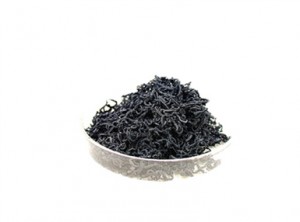Expanded graphite, also known as vermicular graphite, is a crystalline compound that uses physical or chemical methods to intercalate non-carbon reactants into naturally-scaled graphitic intercalated nanocarbon materials and combine with carbon hexagonal network planes while maintaining Graphite layer structure. It not only maintains the excellent physical and chemical properties of graphite, such as high temperature resistance, corrosion resistance, neutron flux, X-ray and gamma-ray long-term irradiation. It also has excellent physical and chemical properties, such as low friction coefficient, good self-lubrication, electrical and thermal conductivity, and anisotropy. Moreover, due to the interaction between the intercalated material and the graphite layer, the expanded graphite exhibits new properties that the pristine graphite and intercalated material do not possess, and overcomes the brittleness and impact resistance of natural graphite. The following Furuite graphite editors share the introduction of the industrial synthesis methods and uses of expanded graphite:

1. Synthetic methods commonly used in industry
①Chemical oxidation
Advantages: Chemical oxidation is a widely used and well-established method in industry. Therefore, it has obvious advantages, mature technology and low cost.
Disadvantage: The intercalating agent is usually concentrated sulfuric acid, which consumes a large amount of acid. There is Sox harmful gas pollution in the production process, and residues in the product also corrode the synthesis equipment.
②Electrochemical oxidation
Like chemical oxidation, it is one of the common industrial synthesis methods for expanded graphite.
Advantages: No need to add strong oxidants, such as strong acids, and the reaction can be controlled by adjusting parameters such as current and voltage. The synthesis equipment is simple, the synthesis amount is large, the electrolyte is not polluted, and can be reused.
Disadvantages: The stability of the synthesized product is poorer than other methods, which require higher equipment, and there are many factors that affect the quality of the product. Sometimes, the expanded volume of the product is greatly reduced due to the increase in ambient temperature. In addition, there are side reactions at high currents in aqueous solutions, so it is difficult to obtain first-order compounds.
2. Main production enterprises and production capacity
The production of expanded graphite products in my country has grown from the initial stage to more than 100 manufacturers, with an annual output of about 30,000 tons, and the market concentration is low. Also, most manufacturers are primarily low-end seal fillers, rarely used in automotive seals and nuclear aviation lights. However, with the development of domestic technology, the proportion of high-end products will gradually increase.
3. Market demand and forecast of sealing materials
At present, expanded graphite is mainly used as automotive sealing materials, such as cylinder gaskets, intake and exhaust port gaskets, etc. Expanded graphite sealing materials in my country are mainly used as sealing fillers. At present, expanded graphite with low carbon content has been developed, which can greatly reduce the production cost of expanded graphite, thereby replacing asbestos on a large scale and increasing demand. On the other hand, if plastic, rubber and metal sealing materials can be partially replaced, the annual domestic demand for expandable graphite sealing materials will be greater.
In the automobile industry, each automobile cylinder head gasket, air intake and exhaust port gasket needs about 2~10kg of expanded graphite, and every 10,000 cars needs 20~100 tons of expanded graphite. China’s automobile industry has entered a period of rapid development. Therefore, my country’s annual demand for expanded graphite sealing materials is still very objective.
Post time: Sep-07-2022